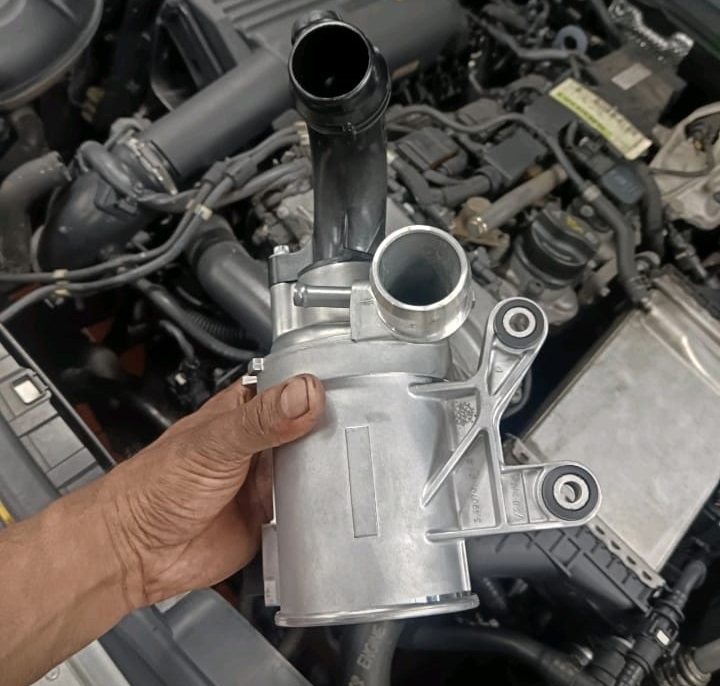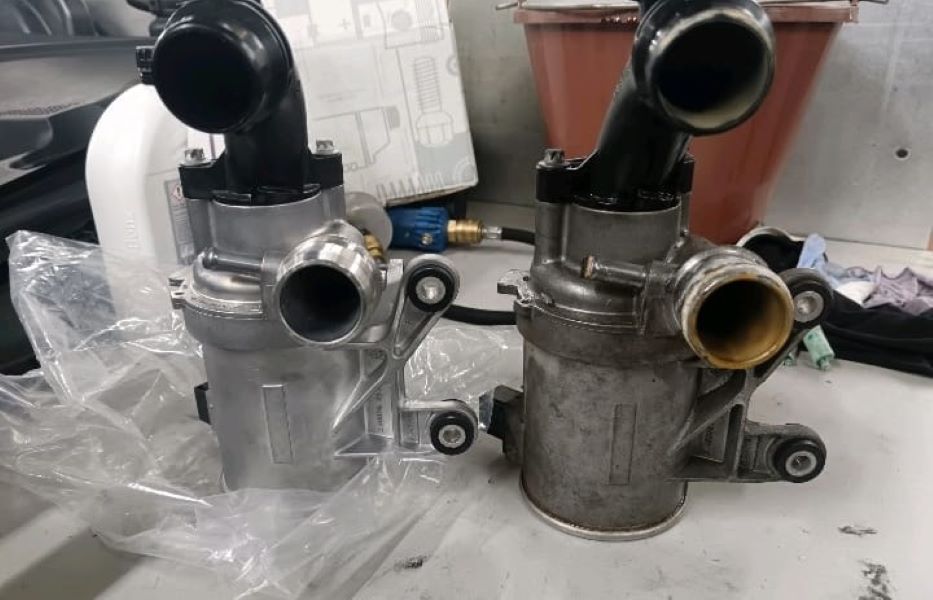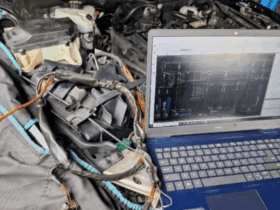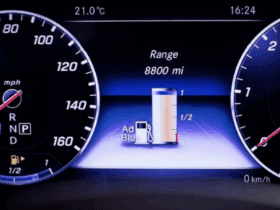Table of Contents
Engine Overheating but Coolant Full: Diagnosis & Solution in a Mercedes-Benz C Class 205
One of the most frustrating experiences for car owners is when the engine overheats even though the coolant tank is full. Many assume overheating is only caused by low coolant, but in reality, there are several other hidden reasons why a vehicle may run hot despite having the proper coolant level.
In this case study, we’ll examine a Mercedes-Benz C Class 205 equipped with the M274 engine that suffered from engine overheating but coolant full. We’ll cover the diagnostic steps, the root cause, and how the problem was fixed. You’ll also learn the symptoms of a failing water pump and preventative measures to avoid costly repairs.

Symptoms, Causes, and Fixes
| Symptoms | Possible Causes | Recommended Fix |
|---|---|---|
| Engine overheating with full tank | Failed electrical water pump | Replace the faulty pump |
| Radiator fan running constantly | Coolant not circulating properly | Check pump operation & wiring |
| Temperature warning light on dash | Blocked coolant passages or air pockets | Bleed system, inspect coolant flow |
| Steam from radiator | Insufficient coolant circulation | Inspect pump, thermostat, and radiator flow |
| Erratic temperature gauge readings | Weak water pump performance | Replace water pump before full failure |
Customer Complaint
The owner of a Mercedes-Benz C Class 205 reported that the vehicle’s engine temperature warning light was coming on, despite the coolant reservoir being full. The radiator fan was running at maximum speed, but the temperature continued to rise.
Initial Inspection
1. Coolant Level Check
- – Coolant expansion tank full.
- – Cap properly sealed, no pressure loss.
2. Leak Inspection
- – No leaks around radiator, hoses, or cooling system.
- – No coolant residue under the vehicle.
3. Radiator Fan
- – Fan operating at high speed.
- – ECU was actively trying to cool the engine, but without success.
4. External Blockages
- – Radiator fins clean, no debris.
- – Thermostat functioning correctly.
At this stage, no external issue was detected, requiring advanced diagnostics.
Diagnostic Procedure Using Xentry
1. Connecting to Xentry
The vehicle was connected to the Mercedes-Benz Xentry diagnostic tool.
- – Fault code detected: Electrical Water Pump Failure.
2. Testing the Water Pump
- – Used Xentry to manually activate the water pump.
- – Pump failed activation test → confirmed non-functional pump.


3. Power Supply & Wiring Check
- – Inspected wiring harness and connectors.
- – Power supply intact, no shorts or voltage drops.


4. Coolant Flow Verification
- – Inspected coolant hoses for blockages.
- – No restrictions detected.
Conclusion: The electrical water pump had failed mechanically.
Repair Solution: Replacing the Electrical Water Pump
Step 1: Remove Faulty Pump
- – Drained coolant system to avoid spillage.
- – Disconnected pump wiring and coolant hoses.
- – Unbolted and removed old water pump.


Step 2: Install New Pump
- – Mounted a genuine Mercedes-Benz electrical water pump.
- – Reconnected hoses and electrical connectors.

Step 3: Refill & Bleed Coolant System
- – Refilled coolant to recommended level.
- – Used proper bleeding procedure to remove air pockets.
- – Verified coolant circulation.
Step 4: Final Testing
- – Ran engine and monitored coolant temperature.
- – Fan operated normally, no overheating.
- – Final Xentry scan → no fault codes.
Problem solved: The C Class 205 no longer overheated.
Symptoms of a Bad Water Pump
Recognizing early signs of a failing water pump can prevent breakdowns:
- 1. Engine Overheating Temperature warning even with full coolant.
- 2. Coolant Leaks Visible coolant under engine bay.
- 3. Whining or Grinding Noise Worn bearings inside pump.
- 4. Steam from Radiator Coolant not circulating properly.
- 5. Erratic Temperature Gauge Fluctuating readings during driving.
- 6. Low Coolant Flow in Radiator Weak or no coolant movement.
Preventative Maintenance Tips
- – Inspect water pump regularly for unusual noises or leaks.
- – Use genuine Mercedes coolant and avoid mixing types.
- – Ensure cooling system is properly bled after servicing.
- – Perform periodic scans for diagnostic trouble codes (DTCs).
- – Replace failing pumps early to avoid severe engine damage.
Conclusion
Diagnosing engine overheating with full coolant can be challenging, but with the right tools and process, the problem can be solved efficiently.
In this Mercedes-Benz C Class 205 M274, the culprit was a failed electrical water pump. By replacing it and ensuring the system was properly bled, the overheating issue was permanently resolved.
Key Takeaway: If your car overheats despite having full coolant, always check the water pump, wiring, and coolant flow. Early detection can save thousands in repair costs.
More Mercedes Cooling System Resources
Want to explore more causes, symptoms, and repair tips for coolant leaks, overheating, and contamination?
Learn more about Mercedes cooling system faults in our full Cooling System Guide.
FAQs
Q1: Why does my car overheat if the coolant tank is full?
A full tank doesn’t guarantee circulation. A failed water pump or blocked flow can still cause overheating.
Q2: How do I know if my water pump is bad?
Watch for overheating, leaks, whining noises, or erratic temperature gauge readings.
Q3: Can I drive with a bad water pump?
No. Driving with a faulty pump risks severe engine damage due to overheating.
Q4: How much does it cost to replace a water pump in a Mercedes C Class 205?
Depending on labor and parts, typically $700–$1,200.
Q5: Should I always bleed the coolant system after pump replacement?
Yes. Air pockets can block coolant flow and cause repeat overheating.
Author
Written by: Mercedes Expert
Automotive Technical Trainer & Mercedes-Benz Diagnostic Specialist
With years of hands-on experience repairing and diagnosing Mercedes-Benz vehicles, specializes in case-study-based troubleshooting guides that blend workshop accuracy with educational clarity.
Last Updated: August 2025






Leave a Reply